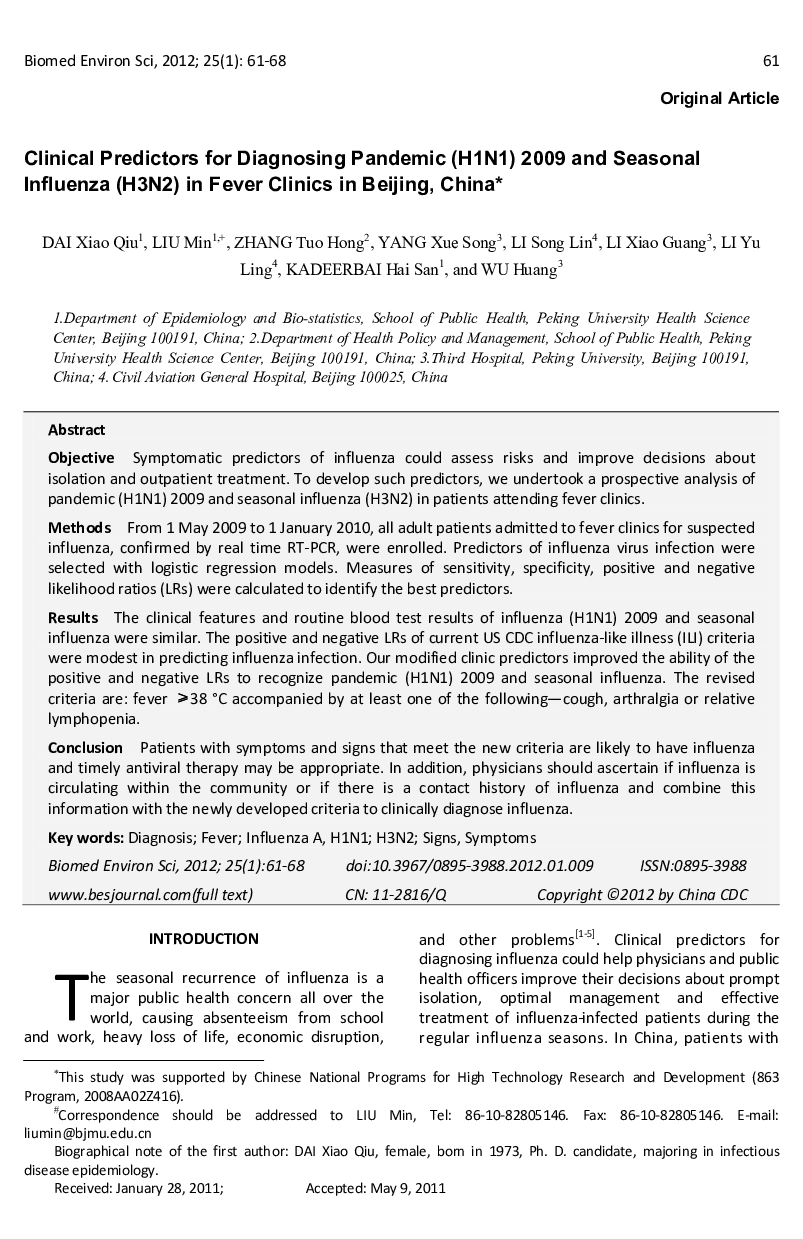| Article ID | Journal | Published Year | Pages | File Type |
|---|---|---|---|---|
| 4196418 | Biomedical and Environmental Sciences | 2012 | 8 Pages |
ObjectiveSymptomatic predictors of influenza could assess risks and improve decisions about isolation and outpatient treatment. To develop such predictors, we undertook a prospective analysis of pandemic (H1N1) 2009 and seasonal influenza (H3N2) in patients attending fever clinics.MethodsFrom 1 May 2009 to 1 January 2010, all adult patients admitted to fever clinics for suspected influenza, confirmed by real time RT-PCR, were enrolled. Predictors of influenza virus infection were selected with logistic regression models. Measures of sensitivity, specificity, positive and negative likelihood ratios (LRs) were calculated to identify the best predictors.ResultsThe clinical features and routine blood test results of influenza (H1N1) 2009 and seasonal influenza were similar. The positive and negative LRs of current US CDC influenza-like illness (ILI) criteria were modest in predicting influenza infection. Our modified clinic predictors improved the ability of the positive and negative LRs to recognize pandemic (H1N1) 2009 and seasonal influenza. The revised criteria are: fever ⩾38 °C accompanied by at least one of the following-cough, arthralgia or relative lymphopenia.ConclusionPatients with symptoms and signs that meet the new criteria are likely to have influenza and timely antiviral therapy may be appropriate. In addition, physicians should ascertain if influenza is circulating within the community or if there is a contact history of influenza and combine this information with the newly developed criteria to clinically diagnose influenza.
